This garlicky, sesame-y spinach dish is a delicious and totally addictive side dish that makes it way too easy to eat an entire bowl of greens! The recipe is fast and simple to make in a few minutes with just spinach, garlic, sesame oil, sesame seeds, and salt. Shall we?

What is Korean Spinach | Is Korean Spinach Healthy? | Ingredients for Korean Spinach | Instructions | Pro Tips and Tricks | Tools and Equipment | Advance Prep and Storage | How to Serve | FAQs | RECIPE
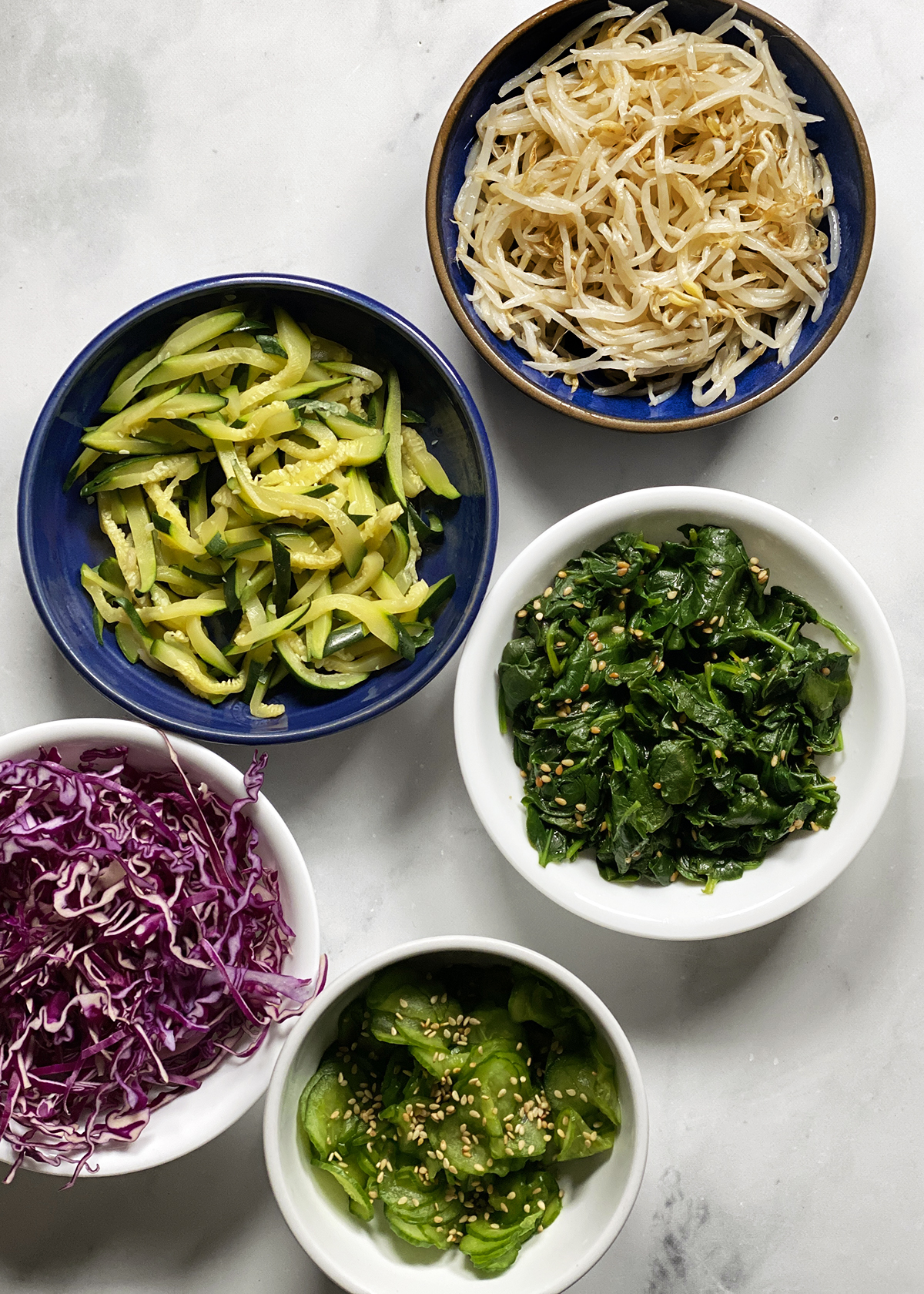
Explore More
- What is Korean Spinach
- Spinach Health Benefits and Dietary Considerations
- What Ingredients You Need for Korean Spinach
- What Kind of Spinach Should I Use for Korean Spinach
- Additional Ingredients Notes and Resources
- Instructions for How to Make Korean Spinach
- Pro Tips and Techniques for Korean Spinach
- Substitutions and Variations
- Tools and Equipment
- Advance Prep and Storage
- How to Serve and Eat Korean Spinach
- FAQ
- Korean Spinach Side Dish | Shigeumchi Namul Recipe
What is Korean Spinach
Korean Spinach is cooked spinach seasoned with garlic, sesame oil, salt, and toasted sesame seeds. It is one of the many cooked and seasoned side dishes called banchan 반찬 that are served with Korean meals at home and in restaurants. In Korean, the dish is called Shi-geum-chi Namul or Sigeumchi Namul 시금치나물.
Korean spinach is also an actual cultivar of spinach, different from the common western spinach, baby spinach, and hundreds of other spinach varieties. You don't necessarily have to use actual Korean spinach to make this recipe. For this recipe, you can use any kind of spinach that is most easily accessible to you.
A quick terminology/translation lesson (fluent speakers, please make any corrections!):
- shigeumchi 시금치 - general term for spinach
- shigeumchi namul, 시금치나물 - a type of Korean banchan made of cooked spinach and seasoned with garlic, sesame oil, salt, and sometimes other spices
- namul 나물 - general term for vegetable (or plant)
- banchan 반찬 - general term for any of many types of cooked, pickled, marinated and/or seasoned Korean side dishes
Spinach Health Benefits and Dietary Considerations
As presented, this recipe for Korean Spinach is:
- 100% plant-based, suitable for vegans
- vegetarian
- gluten-free, dairy-free, and sugar-free
- suitable for keto and paleo lifestyles
- Whole 30-friendly if sesame oil in moderation works for you
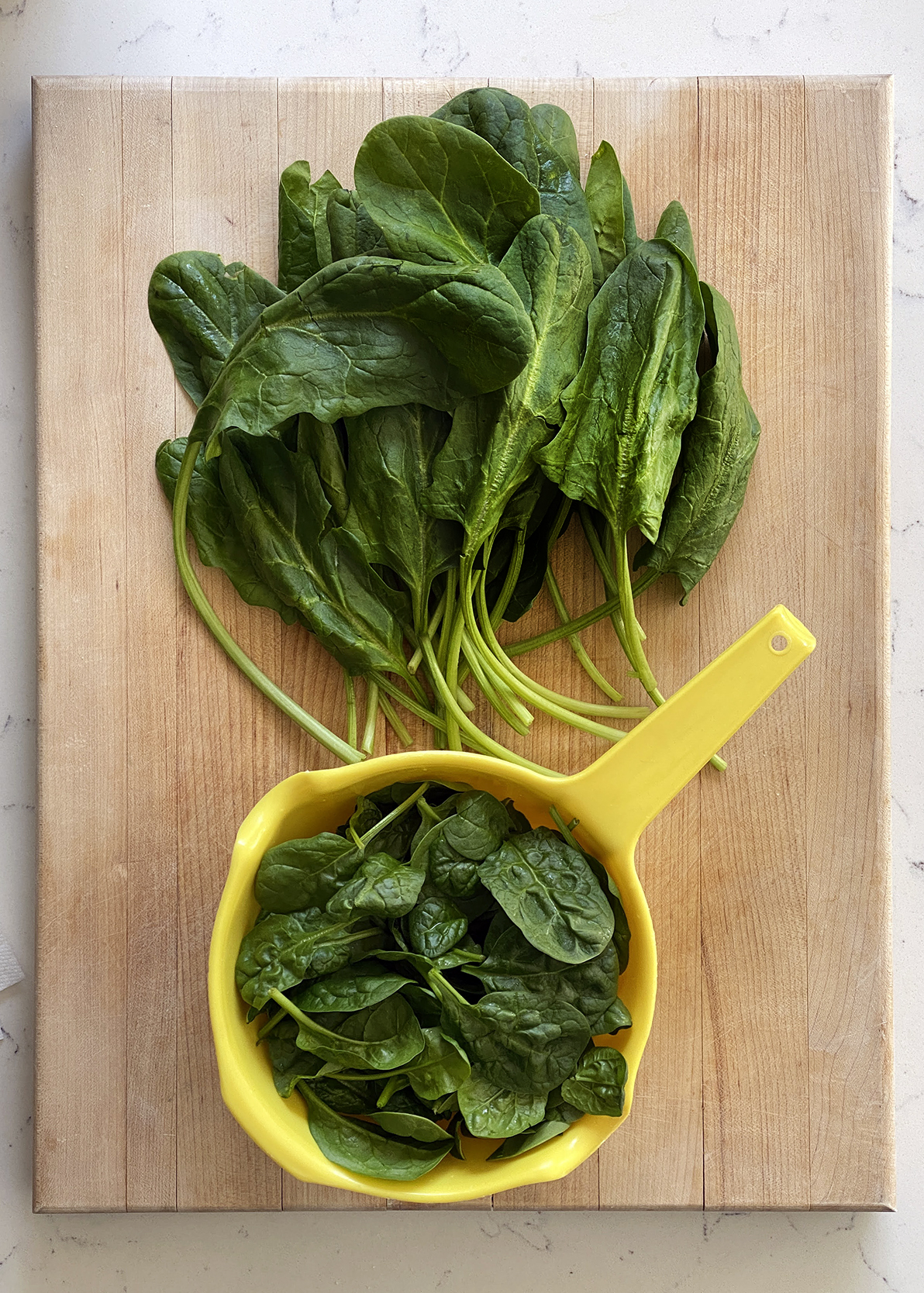
What Ingredients You Need for Korean Spinach
- spinach
- garlic
- salt
- sesame oil
- toasted sesame seeds
There are a few flavor variations for this Korean spinach dish depending on your personal taste and perhaps how you plan to use Korean marinated spinach that include soy sauce for more salt, Korean chili pepper powder gochugaru, and Korean red pepper paste gochujang for heat!
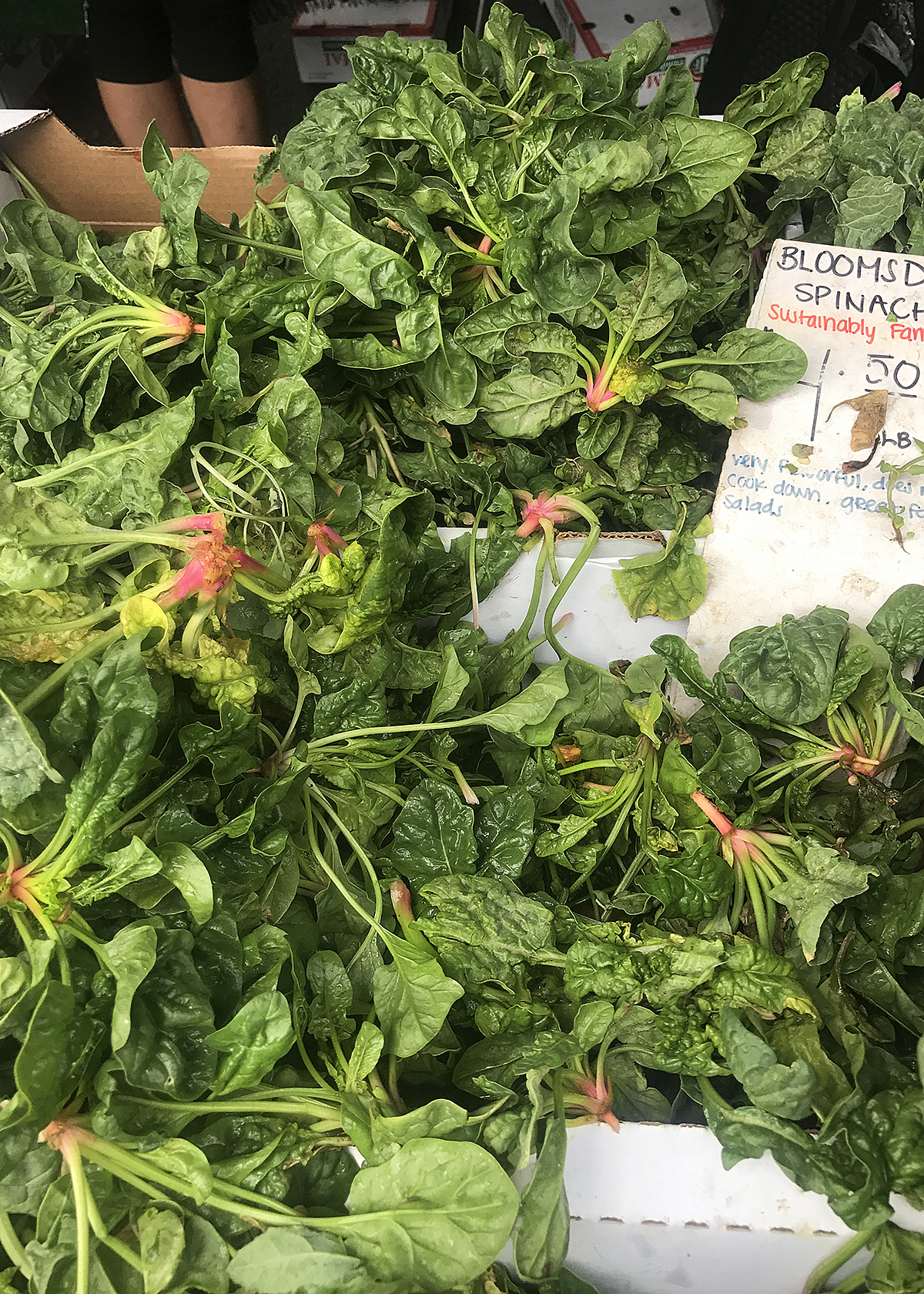
What Kind of Spinach Should I Use for Korean Spinach
Korean Spinach. Traditionally, an actual Korean variety of spinach that has large leaves and thicker, "crunchier" stems would be used for this dish, but it's not widely available. If you can get to a large Korean or Asian market, look for varieties called Korean or Asian with large, almost rocket shaped leaves.
Regular "American" Spinach. Any type of spinach works, especially the regular, full grown spinach with large leaves and prominent stems that you buy in grocery stores that are bunched together by their stems.
Bloomsdale Spinach. If you shop at local farmers' markets, you might be able to find a variety of spinach called "Bloomsdale spinach" that has very curly, ruffled leaves and are usually sold with their whole pink tipped roots. Bloomsdale spinach is especially great for this recipe! Keep the pink part intact when prepping the spinach, discarding only the very end of the roots!
Baby Spinach. Though Baby spinach is not recommended because it's almost a little too fragile and tender, but if that's all that's available, use baby spinach!
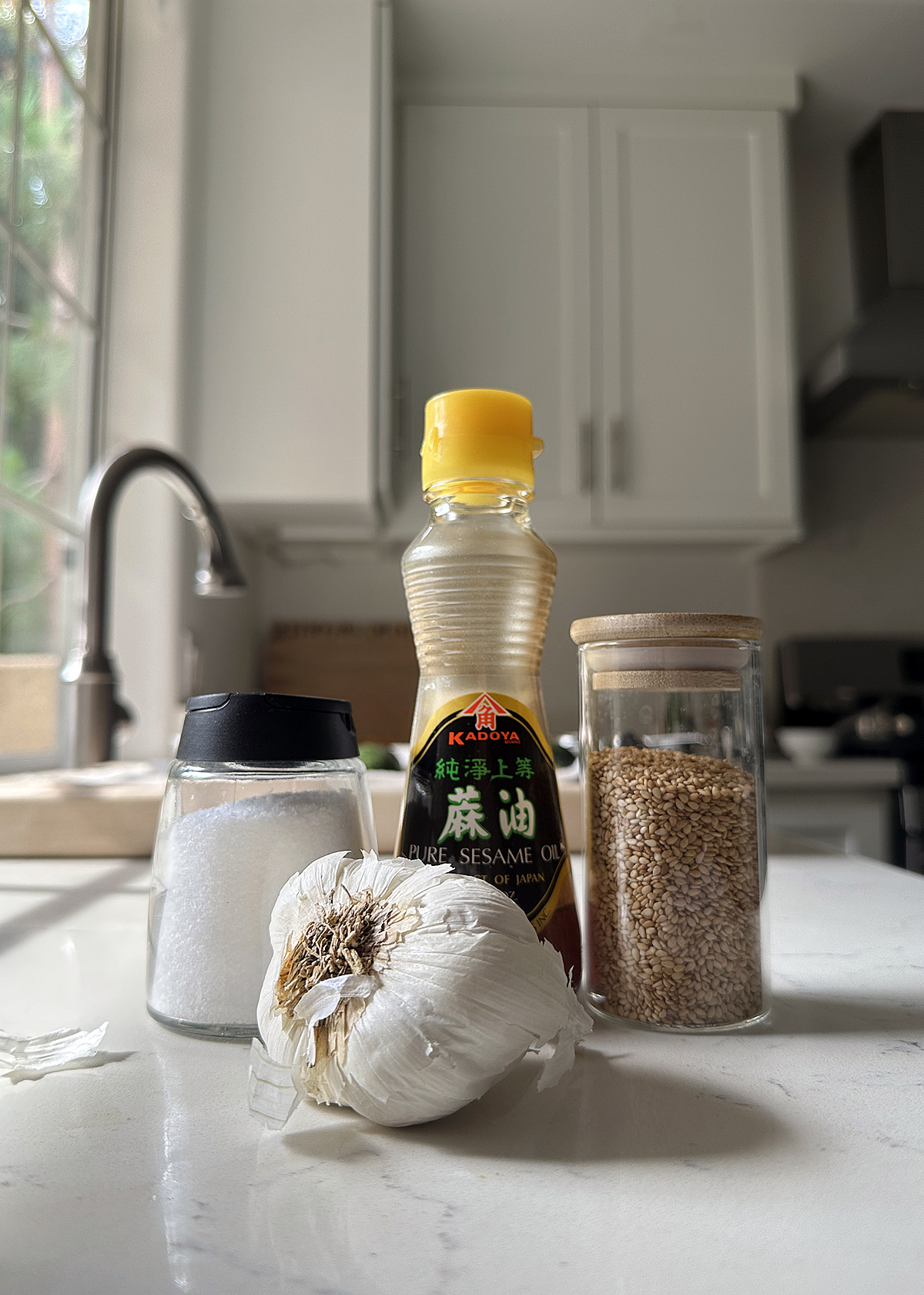
Additional Ingredients Notes and Resources
- Garlic. Use fresh garlic, very finely minced by hand or pushed through a garlic press.
- Sesame Oil. Toasted sesame oil is a finishing oil, added to dishes in small amounts just before serving for its flavor, rather than a cooking oil. It is darker in color and has a deep umami flavor. This is a reliable Japanese brand that I've been using since I was a kid. There are now many brands of toasted sesame seed oil available, even organic versions, at regular grocery stores.
- Toasted Sesame Seeds. Sesame seeds add some texture and when toasted, a layer of umami in addition to the toasted sesame oil. You can buy sesame seeds plain or toasted. Make sure the seeds are toasted. If they are not toasted, toss them in a hot, dry skillet over medium heat for about 90 seconds or until they are fragrant.
- Salt. This is the best all-around salt for everything.
Optional Ingredients Notes
If you want to vary the flavors or make substitutions to the recipe:
- Soy Sauce/Tamari - Tamari is a Japanese-style soy sauce that is brewed without wheat so it is gluten-free. This is the brand I use, which is also organic. You can use regular soy sauce. If soy is not part of your diet, you can use salt, in about half the amount in the recipe.
- Gochugaru - optional ingredient for spice.
- Gochujang. This brand of gochujang is sweetened with tapioca syrup rather than corn syrup, and does not contain wheat in the ingredients, though the label indicates that it's made in a facility that also processes wheat
- All other fresh herbs and produce from either the Santa Monica Farmers' Market on Wednesday, or Whole Foods Market when I can't find what I need at the farmers' market.
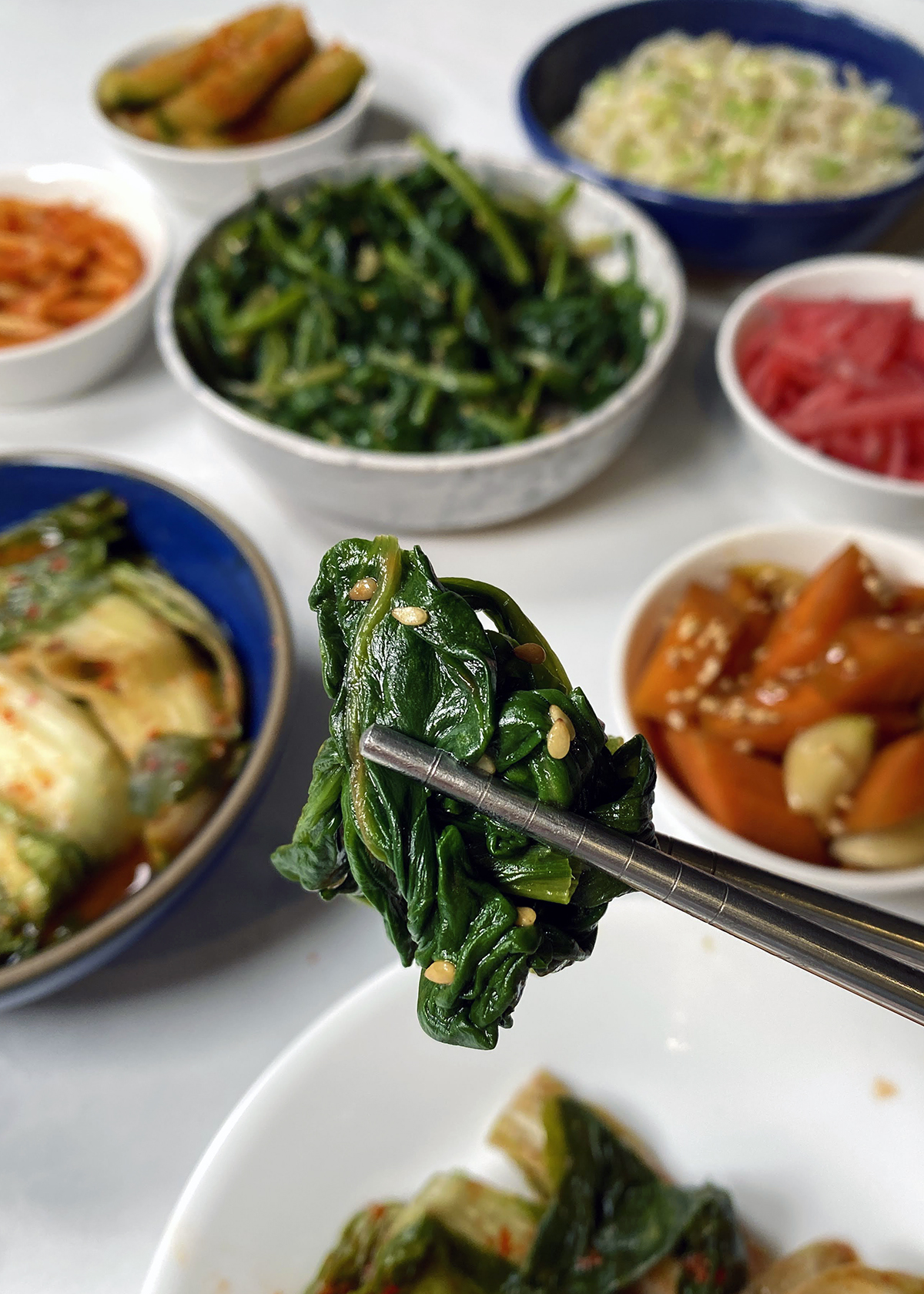
Instructions for How to Make Korean Spinach
Korean Spinach is super fast and easy to make. Simply blanch the spinach in boiling water, squeeze out as much excess water as possible, then toss the blanched spinach with seasonings! When it's all said and done, it takes about 5 minutes total!
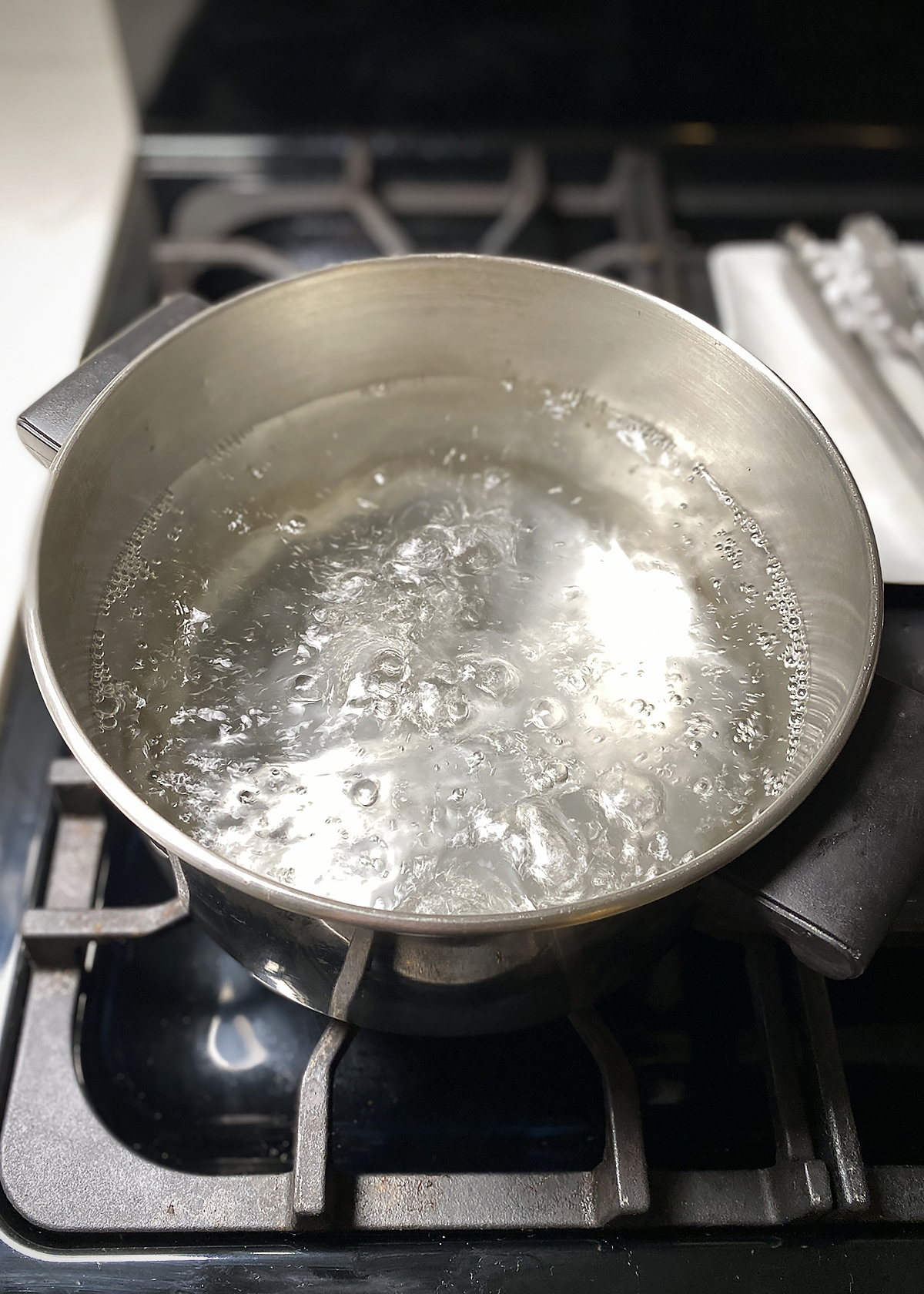
Bring a large pot of water to a boil and prepare an ice water bath in a large bowl.
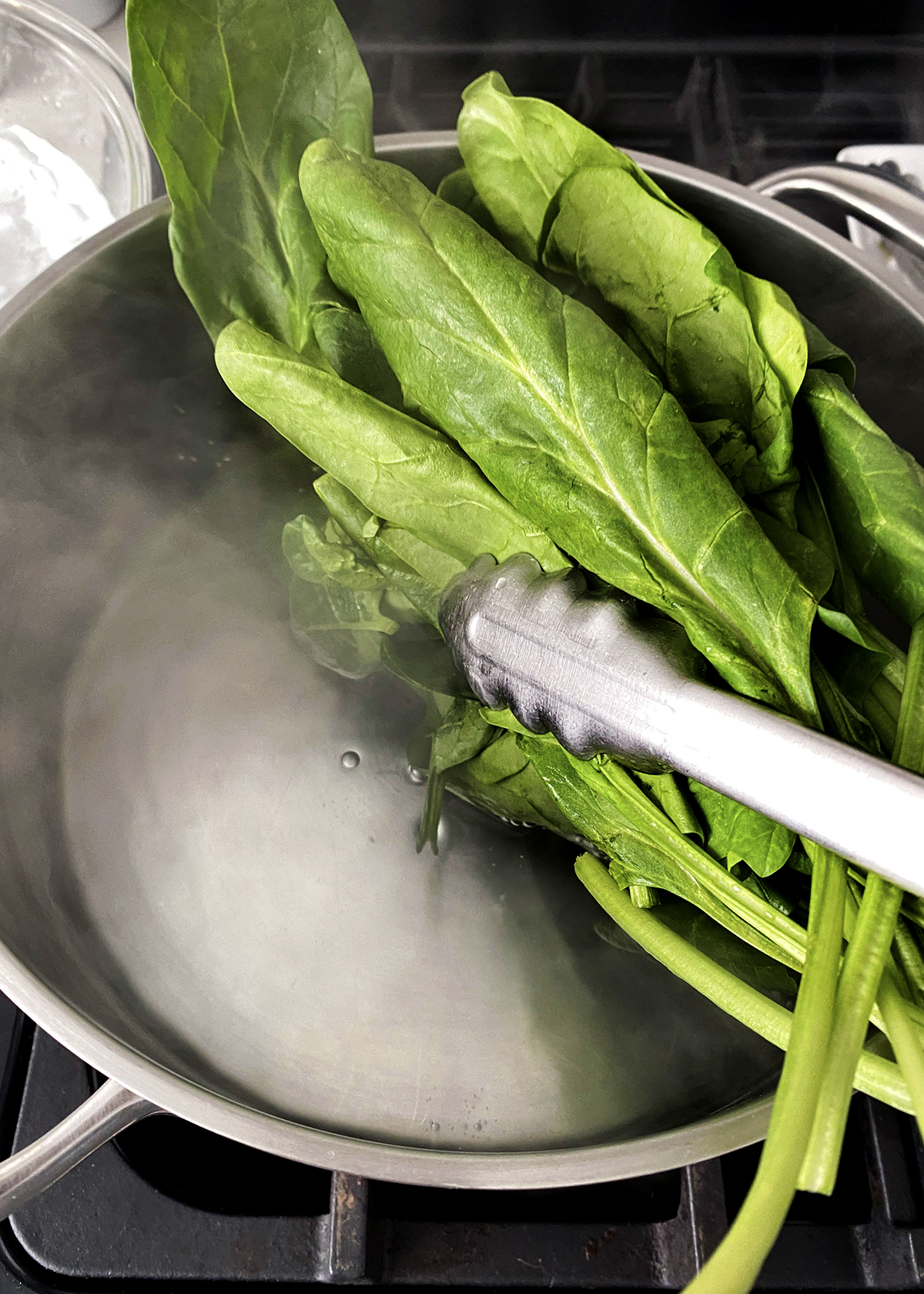
Drop fresh, washed spinach into the boiling water and flash blanch for no more than about 10 seconds.

Immediately remove the spinach to the ice water bath to stop the cooking which keeps the spinach from getting mushy and retains its bright green color.
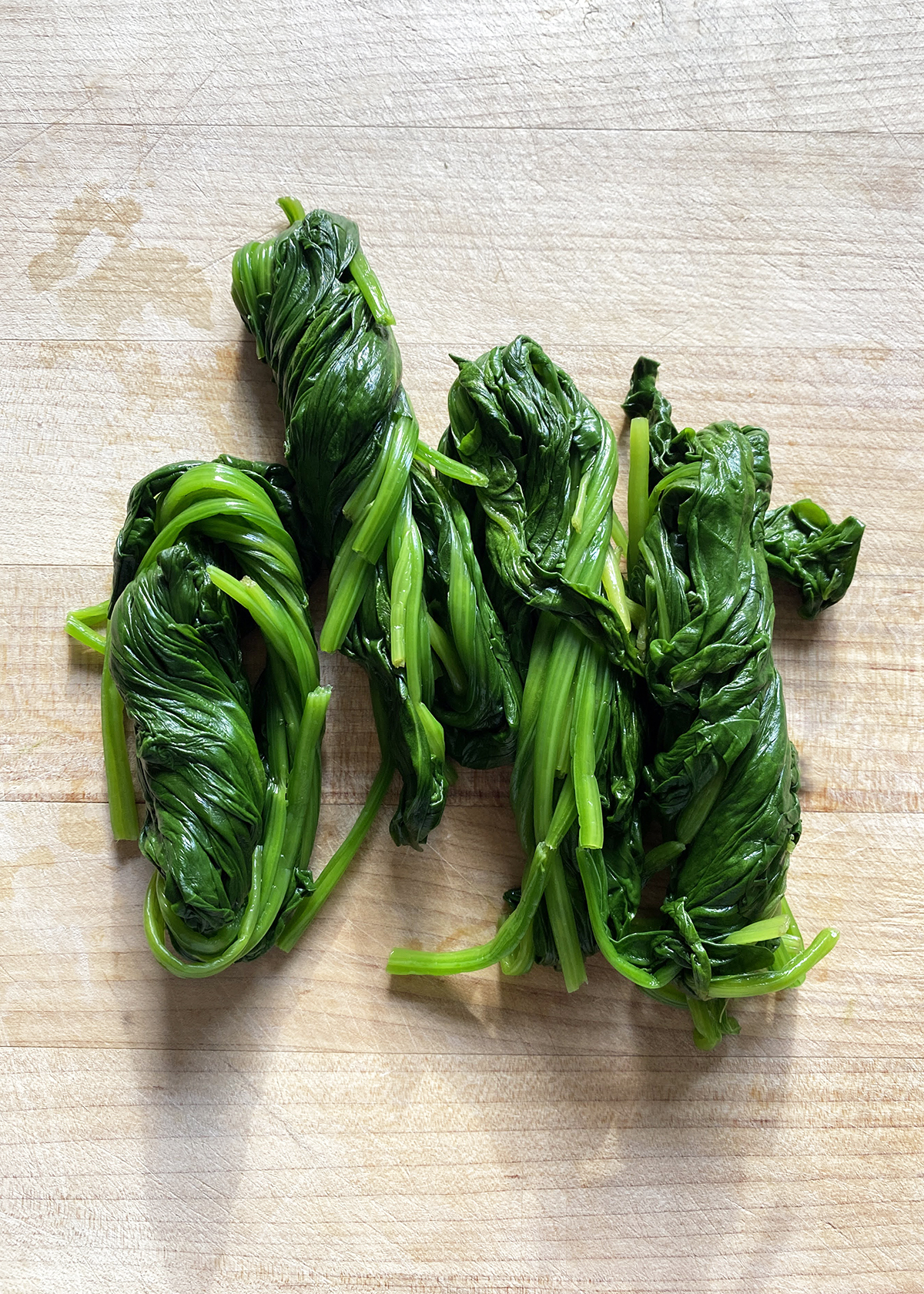
Remove spinach from ice water bath and squeeze excess water from spinach by twisting gently by the handful. You will end up with little squozen spinach balls.
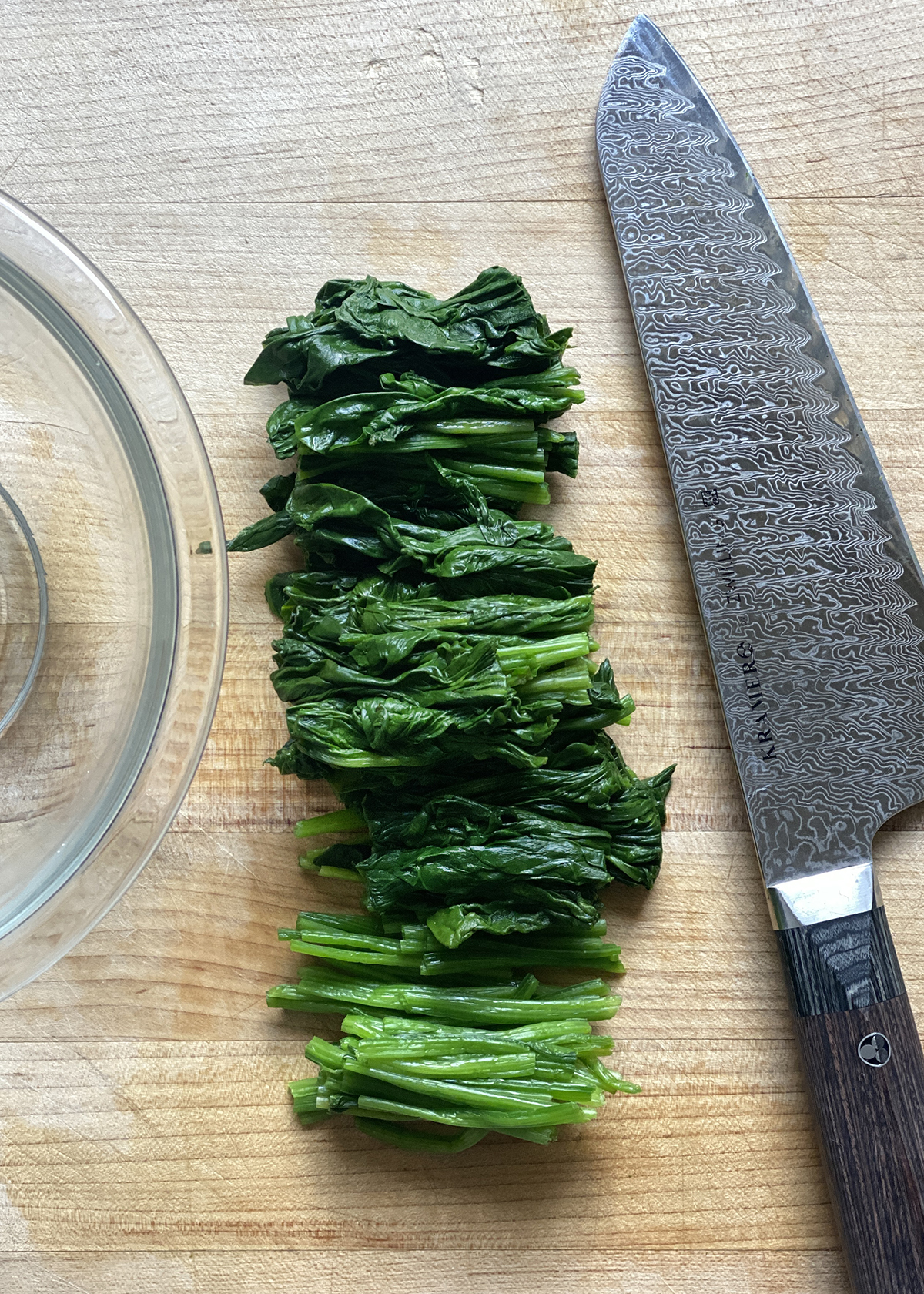
Cut spinach into bite-size pieces, about 2-inches when you pull the pieces apart. You can do this by either separating the spinach slightly, or just cutting straight through the squozen bunches. The spinach does not have to be perfectly even.
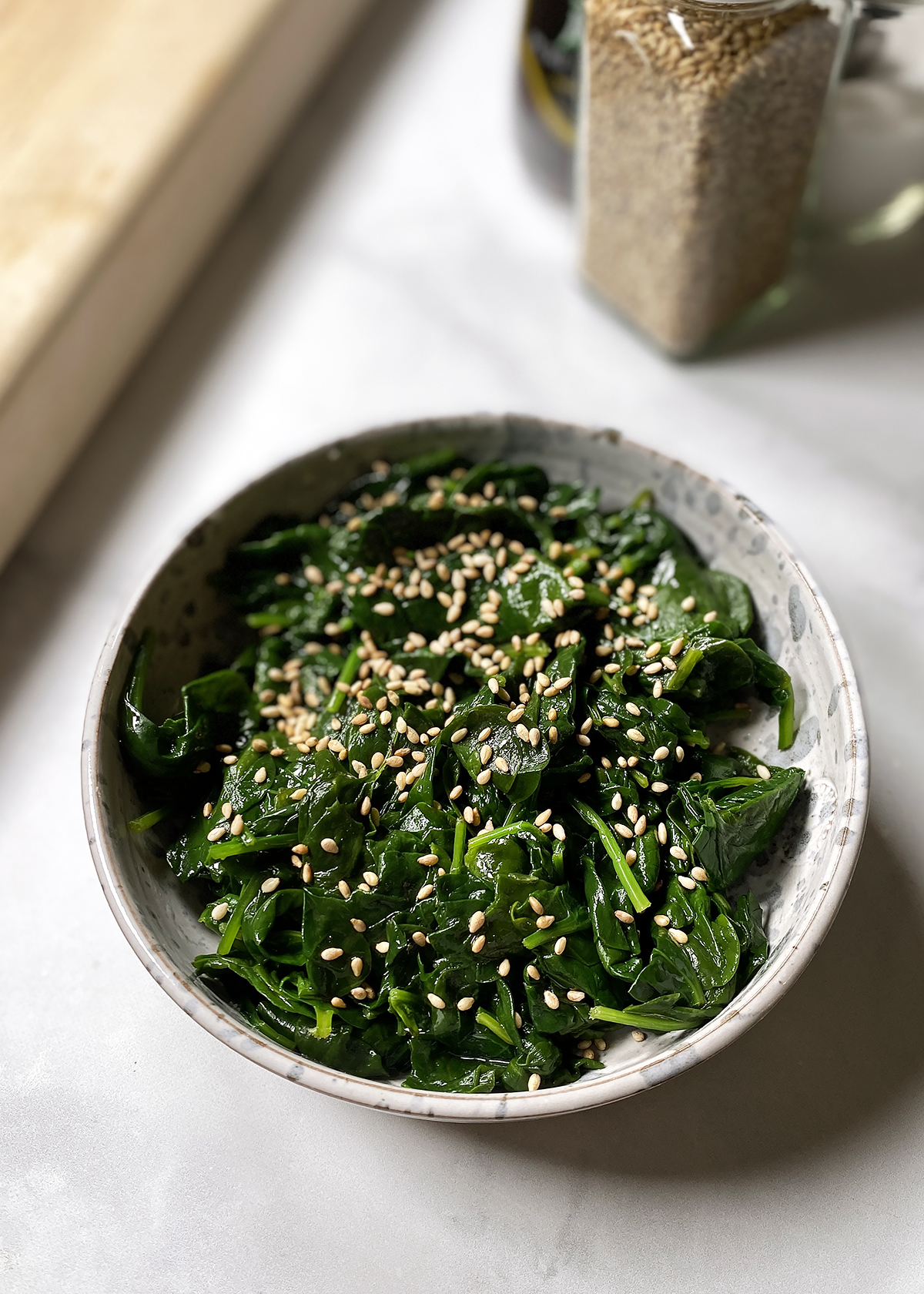
Place the cut spinach into a mixing bowl, then toss with minced garlic, sesame oil, salt, and toasted sesame seeds, gently pulling apart the spinach leaves and pieces as you mix. Garnish with additional toasted sesame seeds right before serving.
Pro Tips and Techniques for Korean Spinach
PRO-TIP #1: You can mix the seasoning ingredients—garlic, salt, sesame oil, and toasted sesame seeds—together in a small bowl first like a dressing, before adding to the spinach in the last step. If you're lazy like me though and don't want to dirty another bowl, just add each ingredient directly to the spinach in the bowl.
PRO-TIP #2: Using your hands to mix the seasoning mix into the spinach is the easiest way to make sure all the spinach is coated, and also the gentlest way to handle the spinach so it doesn't break or tear.
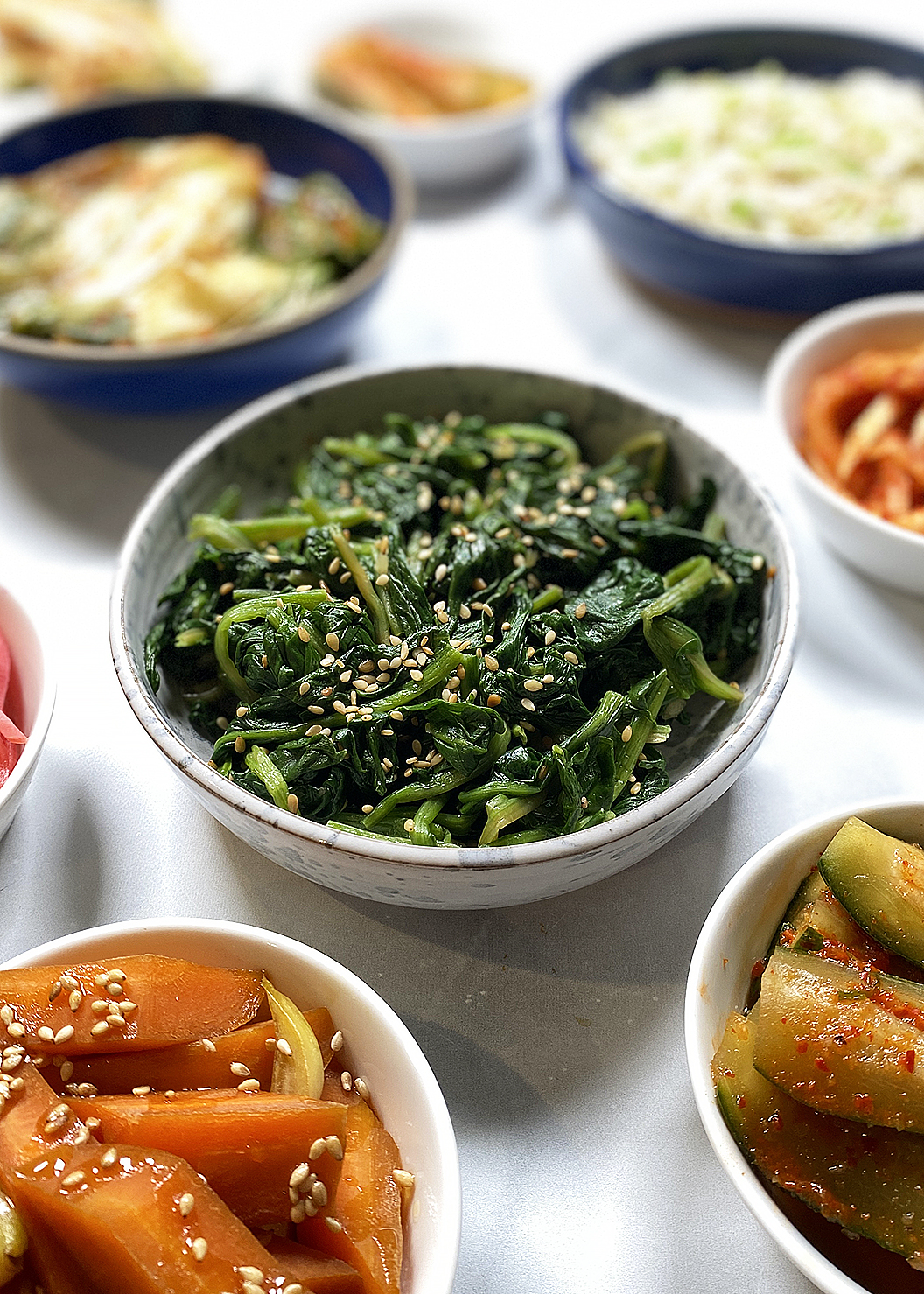
Substitutions and Variations
Substitute a Different Green. You can absolutely use this exact method and seasonings on a different leafy green or vegetable in place of spinach for this dish! Blanch baby bok choy, collard greens, or kale until tender, and use the same seasonings, adjusting the amounts to your taste!
Up the Umami. Tamari and soy sauce are made via fermentation, so they have a subtle umami quality to them. Add a teaspoon or two of tamari or soy sauce (contains gluten) to up the umami factor of Korean spinach.
Make it Spicy. Combine 1 teaspoon of Korean red chili flakes (gochugaru) and/or 1 teaspoon Korean chili paste (gochujang) with the salt, sesame oil, and sesame seeds in a small bowl, then pour over cooked, cut spinach and toss to combine
Tools and Equipment
As I always say, you don't need any special equipment to make almost any recipe. However, that's not to say there are a couple of gadgets and tools that might make it a little easier to get Korean spinach from the fridge to fork, or chopsticks for that matter.
- Large soup or stock pot to blanch the spinach
- Glass mixing bowls for making marinade
- Mini ¼-cup liquid measuring cup
- Mini whisk
- Salad spinner
- Fruit and Vegetable Wash
- Glass storage container with airtight lids, perfect size for storing advance prepped or leftover Korean spinach.
Advance Prep and Storage
This recipe for Korean Spinach as prepared, will keep in the refrigerator for up to 3 days in an airtight container. Keep it in its own container, separate from other banchan.
Korean Spinach, like other banchan, are essentially designed to be made ahead, stored and eaten over the course of a few days. While some sturdier banchan like those made with sturdier vegetables, or made via pickling and fermentation can keep for days and even weeks, Korean Spinach is a little more delicate and will only keep for a few days.
Keep the varying storage times in mind when keeping leftovers of bibimbap or gimbap that contain lots of components. These foods will only keep as long as the Korean Spinach.
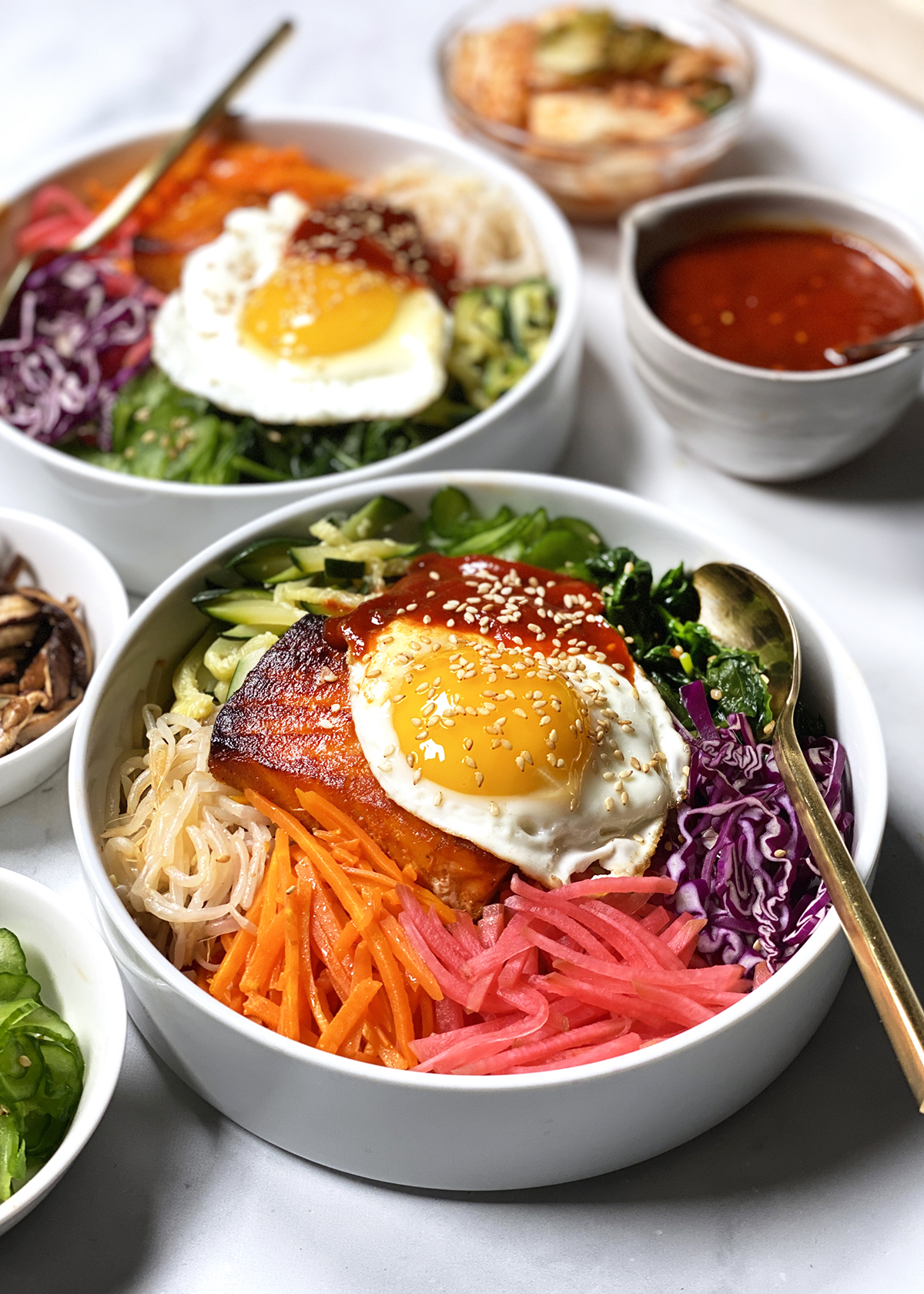

How to Serve and Eat Korean Spinach
The real ones know that a bowl of steamed rice with a side of Korean spinach can be an entire meal! Ok, and with a little kimchi, too. But if you like to have a little bit of protein or some additional color in your meal, here are some great suggestions for what to do with Korean spinach:
- as one of the vegetables on a bowl of traditional Korean bibimbap or Salmon Bibimbap
- rolled into traditional Korean Gimbap
- mixed into Korean glass noodles, Jap Chae
- serve as a regular side dish alongside Miso Salmon or Gochujang Salmon
FAQ
Spinach is notorious for its "shrinkage" during cooking. A 10-ounce bag or container of fresh spinach typically yields about 1½ cups of cooked spinach.
Yes, Korean spinach is different from the common spinach sold in bunches or as baby spinach in American grocery stores. Though Korean spinach is an actual type of spinach Spinacia oleracea L., as opposed to a different leafy green vegetable entirely called "spinach" in English, it is a different cultivar/variety that has a different shaped leaf, thicker stems, and grows in cooler climates and seasons.
You may be able to find the Korean spinach variety in a Korean grocery store or in other Asian markets and labeled "Korean spinach" or "Asian spinach."
There is no difference! "Shigeumchi" is the Korean word for spinach!
Yes, you can use baby spinach to make this recipe, but just because you can doesn't mean you should. Baby spinach is very fragile and doesn't hold up well to the type of blanching and seasoning in this recipe. However, if you have no other spinach options, use baby spinach with the understanding that it may break apart more easily while tossing with the seasoning ingredients. It will also not last as long as leftovers in the refrigerator (maybe one day).
Korean Spinach will last in the refrigerator for up to three days in a tightly covered container.
Yes, technically, shigeumchi namul and the spinach in most Bibimbap can be the same! Shigeumchi Namul can vary in flavor, e.g. spicy, and can be served as banchan in that way. That same spicy variation can be used in any bibimbap! Both dishes are flexible and customizable!
Yes, you can a different leafy green or vegetable in place of spinach for this dish! Blanch baby bok choy, collard greens, or kale until tender, and use the same seasonings, adjusting the amounts to your taste!
Korean Spinach Side Dish | Shigeumchi Namul Recipe
Ingredients
- 16 ounces (1 pound) spinach, root ends trimmed and leaves and stems very thoroughly washed
- 2 garlic cloves finely minced
- 1 tablespoon toasted sesame oil
- 2 teaspoon sea salt plus more to taste
- 2 teaspoon toasted sesame seeds
- optional: 2 tablespoons very thinly sliced green onions
Instructions
- Bring a large pot of water to boil. Prepare an ice water bath in a large mixing bowl on the counter nearby.
- Drop spinach into boiling water. Blanch the spinach until just beginning to wilt, about 10 seconds. Remove the spinach from the pot with tongs, large slotted spoon, or small colander and immediately plunge into ice water bath to stop the cooking.
- Remove spinach from ice water bath a handful at a time and squeeze excess water from spinach by twisting gently. You may have to squeeze each a few times to get as much water out as possible. You will end up with several little squozen spinach balls.
- Cut spinach into bite-size pieces, about 2-inches when you pull the pieces apart. You can do this by either separating the spinach slightly, or just cutting straight through the squozen bunches. The spinach does not have to be perfectly even.
- Place the cut spinach into a mixing bowl, then toss with minced garlic, sesame oil, salt, and toasted sesame seeds, gently pulling apart the spinach leaves and pieces as you mix. Garnish with additional toasted sesame seeds right before serving.

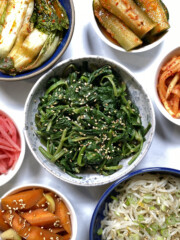

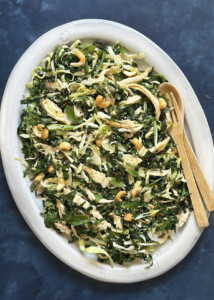

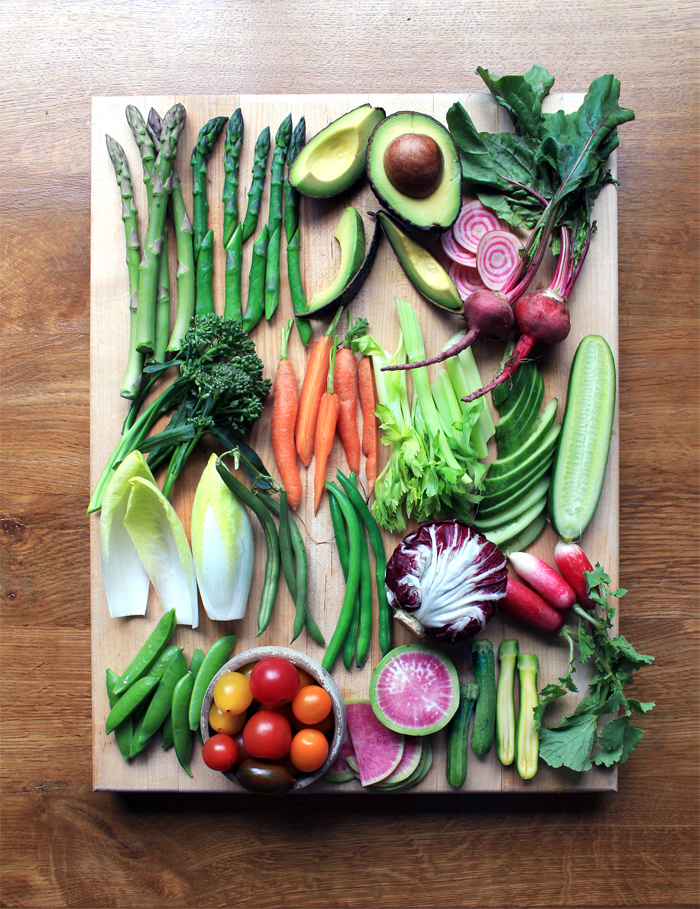
Leave a Reply